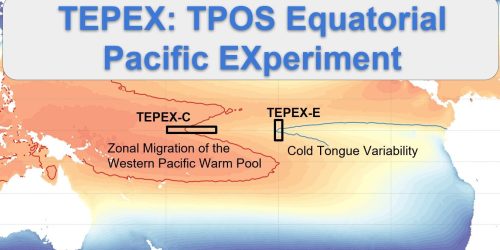Small shifts in tropical precipitation patterns can mean the difference between drought or excess rainfall in certain regions, and can alter larger atmospheric patterns. As Earth’s climate continues to evolve in a changing climate, it is of great societal importance to understand the causes and effects of changing tropical precipitation. Several important questions have yet to be fully characterized by the research community, including how remote climate and weather can influence tropical patterns, and how transported energy is linked to these atmospheric and ocean systems. A new study, funded by the Climate Program Office’s Climate Variability & Predictability (CVP) Program, uses a two-dimensional model to evaluate the role of atmospheric energy fluxes in observed and predicted tropical rainfall shifts from 2000 to 2100.
An international group of researchers, including CVP-funded scientist John Chiang of the University of California, Berkeley and Academia Sinica in Taipei, Taiwan, used this energy flux method because it allowed for a focus on remote influences and more quantitative results. The results of this modeling and analysis, published in Environmental Research: Climate, provide evidence for two main drivers of regional atmospheric energy transports and thus shifts in tropical precipitation: the northern Atlantic Meridional Overturning Circulation (AMOC), and a trend toward permanent El Niño conditions in the equatorial Pacific. The authors also show that the Indian and Southern Oceans contribute very little influence in future climate scenarios. This study was supported by CVP in 2016 to explore climate linkages between the AMOC and Atlantic Ocean, and contributes to a growing body of literature providing a more detailed characterization of AMOC flow pathways and their impact on variability.










